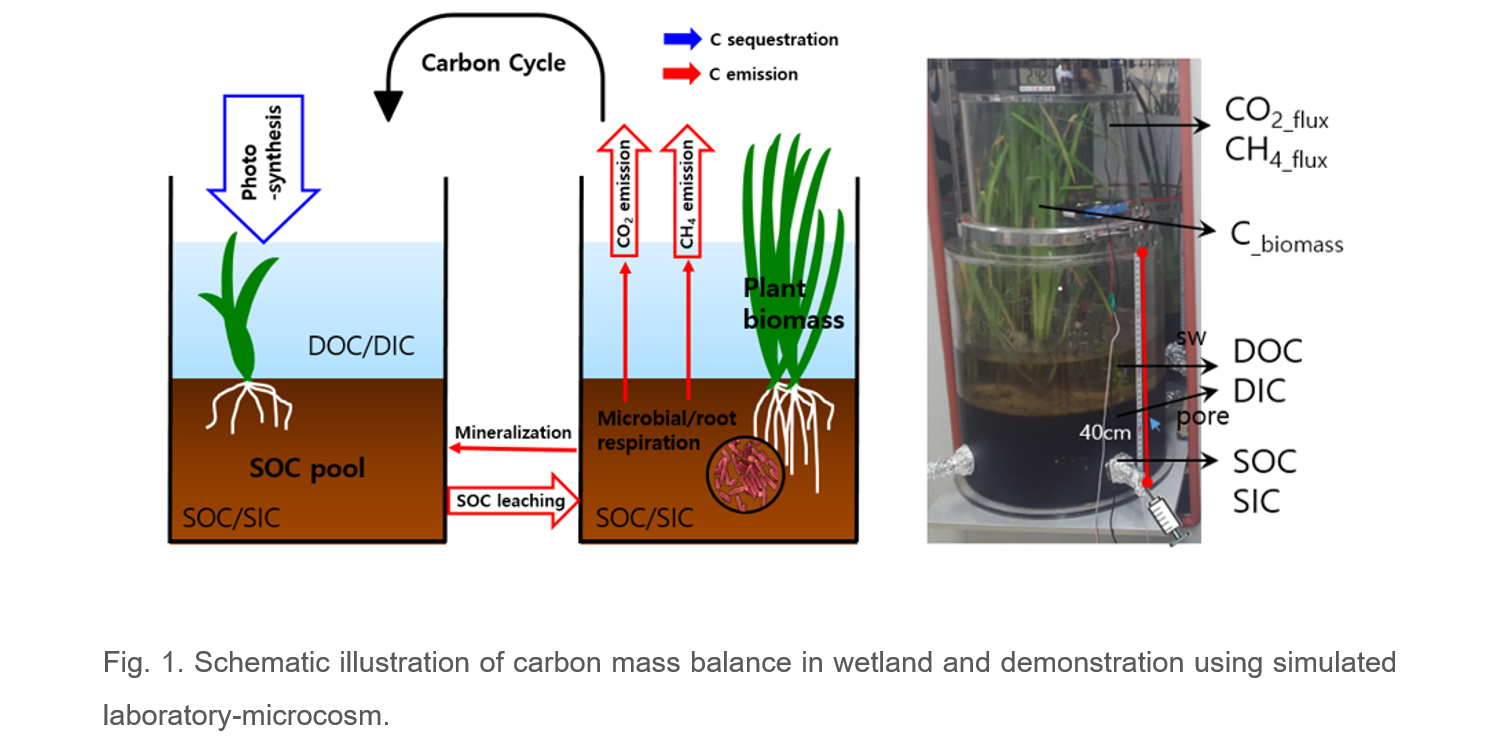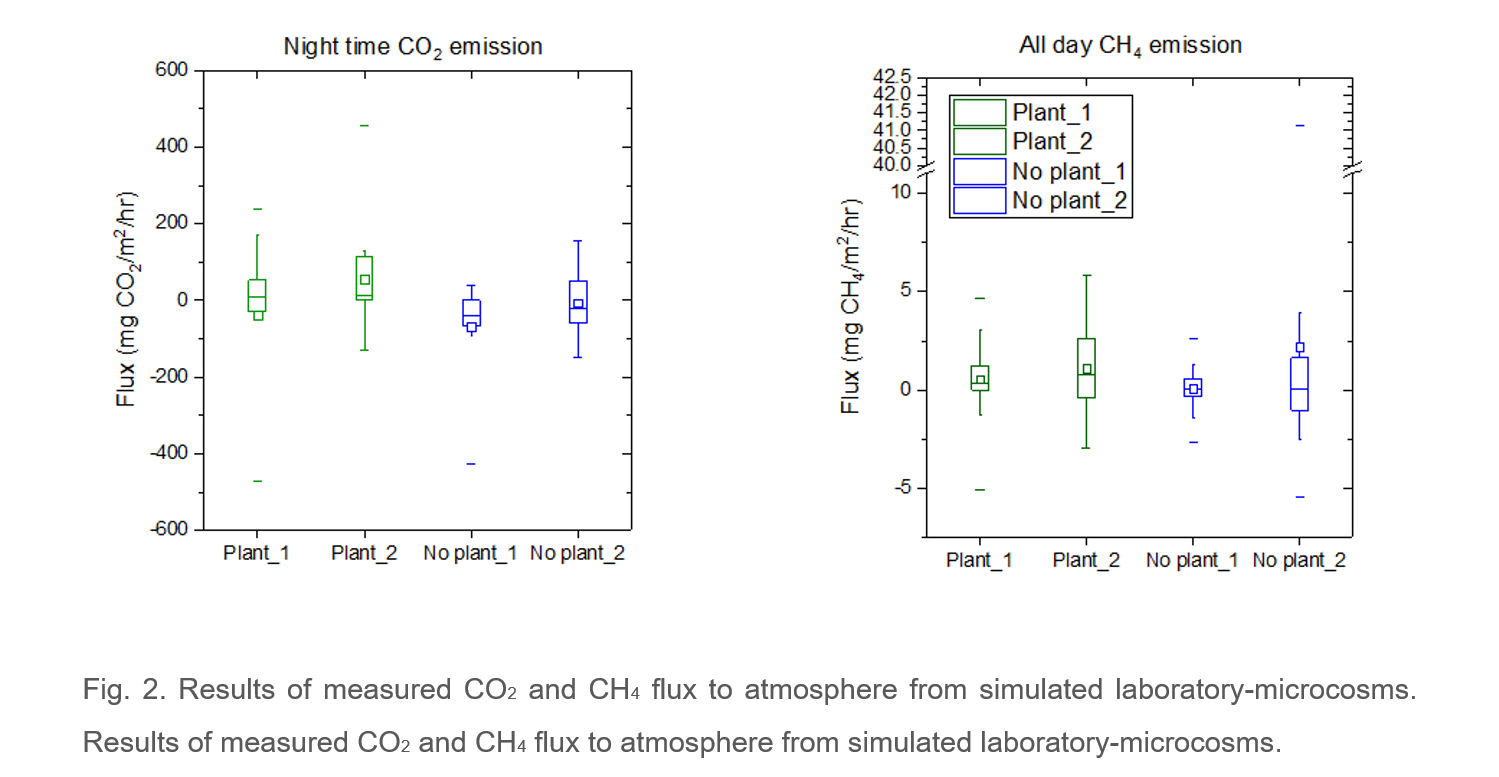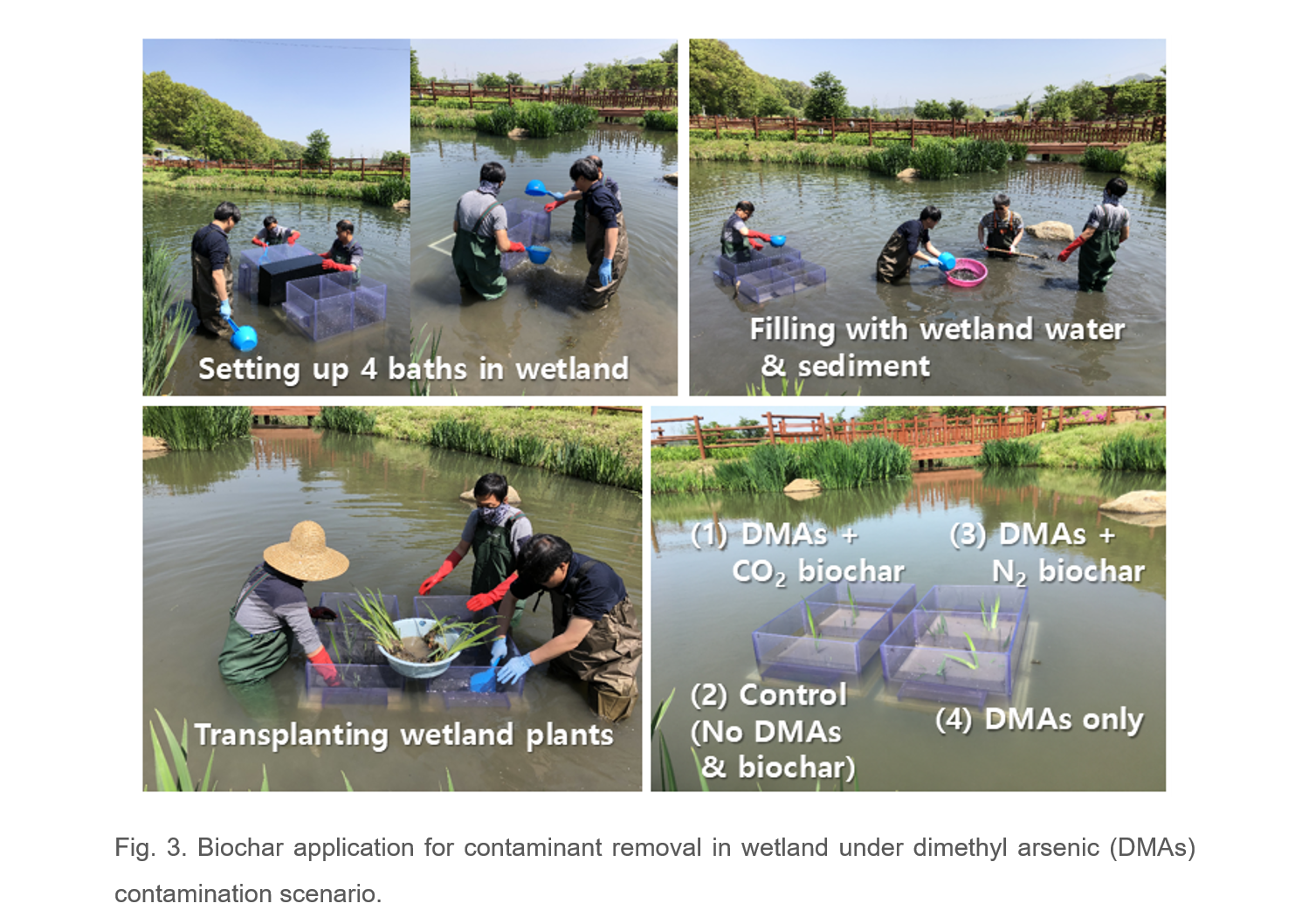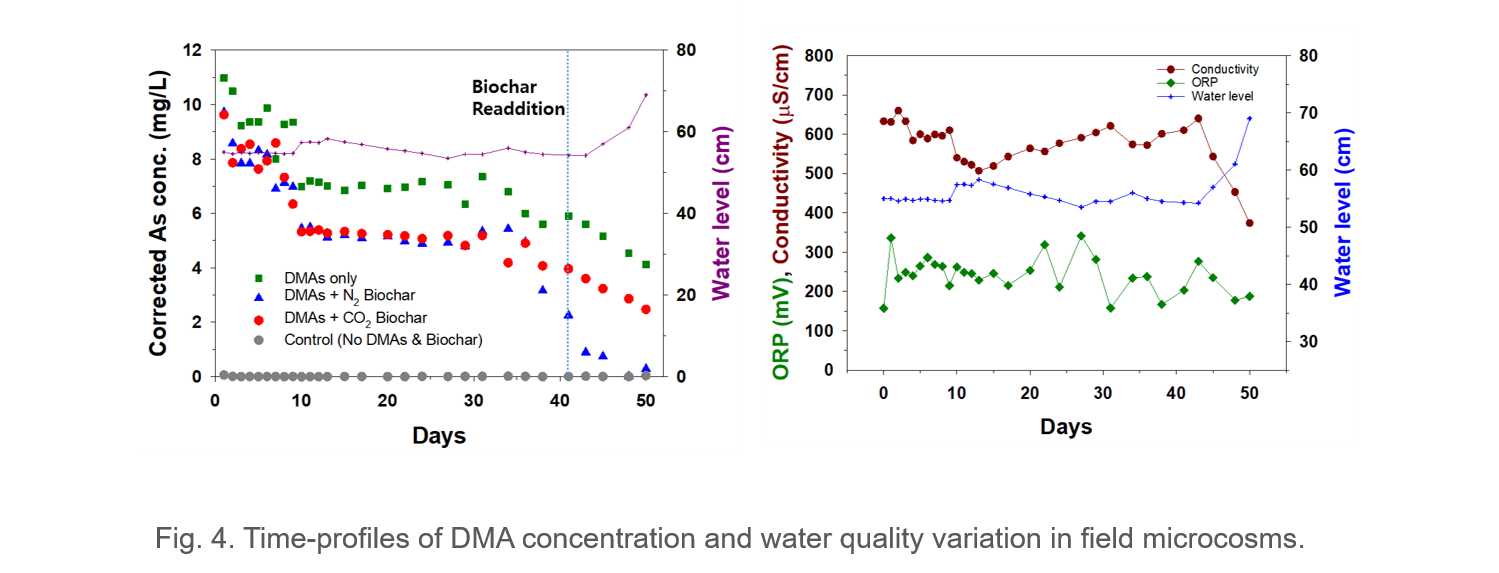
The roles of wetlands as carbon and contaminant sinks have been investigated in a constructed wetland located in Okcheon, Chungbuk, South Korea. The growth of plants produces carbon biomass by photosynthetic uptake of atmospheric CO2 and a large portion of the fixed carbon is known to be respired to CO2 or CH4 by plant and microbial respiration. Carbon cycling in a Korean constructed wetland has not been intensively investigated. This study evaluated carbon mass balance using a simulated-wetland microcosm. Particularly, not much is known about the contribution of CH4, a greenhouse gas with a global warming potential equivalent to more than 20 times that of CO2, emission from the constructed wetland that is facilitated to treat non-point source pollution. The results from microcosm experiments showed that the amount of carbon fixation is much greater than that of carbon emission; therefore, the wetland works as a net carbon sink. The absolute amount of CH4 emission to the atmosphere was measured and found to be lower than the CO2 emission; however, considering the global warming potential of CH4, attention should be paid to its impact on global warming.
As one pollution control technique in wetlands, biochar was applied for contaminant removal under dimethyl arsenic (DMAs) contamination scenario. A field microcosm experiment was carried out in the artificial ecological wetland near the Daecheong Lake to evaluate the bio-geochemical behavior of the redox-sensitive pollutant DMAs in the wetland. Four test batches filled with wetland water and sediment and the transplanted wetland plants were installed in the wetland field site to maintain the same weather conditions as the wetland environment. Four discrete microcosms [(1) DMAs + CO2 biochar, (2) Control (No DMAs & biochars) (3) DMAs + N2 biochar, (4) DMAs only] were set up, and water level variations and water quality were monitored for 50 days. In the initial period, the concentration of DMAs decreased by 55% for cosms with biochars and reached a plateau; there was little difference in removal efficiency for either type of biochar. The readdition of biochar after 41 days led to DMA reduction by 97%, which demonstrated the effectiveness of biochar at removing aquatic pollutants in wetland environments.
Contact: In-Hyun Nam (nih@kigam.re.kr)



